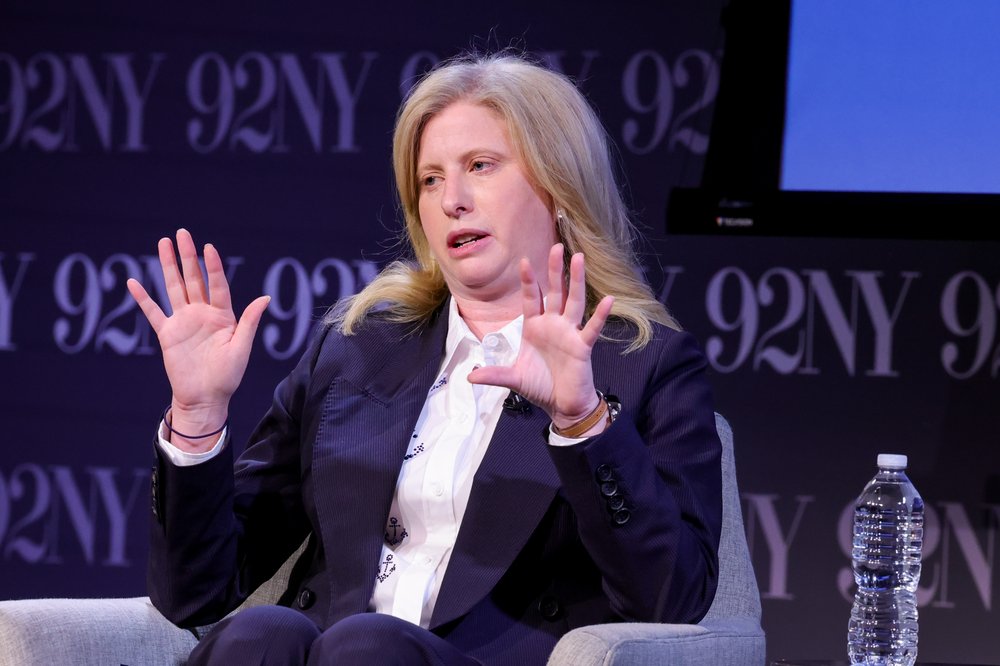New Yorkers feel somewhat safer in public, but subway fears persist, survey finds
June 5, 2025, 10:01 a.m.
Subway safety perceptions are stuck at pandemic-era lows, even as city and state leaders pour resources into reducing crime, according to a new survey.

New York City residents feel marginally safer in public this year compared to 2023, but still not as safe as they did before the COVID-19 pandemic, according to a new survey.
The poll, conducted by the nonprofit Citizens Budget Commission, also found commuters’ perceptions of subway safety haven’t changed since last year, despite significant efforts and resources from public officials to make them feel more secure.
NYPD Commissioner Jessica Tisch was asked about the survey and public safety perceptions at a forum Wednesday at the 92nd Street Y. She blamed ongoing anxiety over crime on criminal justice reforms enacted by the state in 2020, the same year the pandemic began.
“ People say, ‘I felt safer before the pandemic,’” Tisch said. “Maybe — but really you felt safer before the criminal justice laws were changed in New York state.”
According to the survey, 51% of New Yorkers said they felt safe riding the train during the day, and just 22% said they felt safe doing so at night. Those numbers are significantly lower than in 2017, when 82% said they felt safe during the day and 46% at night.
Overall, 42% of respondents rated public safety in the city as “good” or “excellent” this year, a five-point improvement from 2023, but still below the 50% recorded in 2017.
The survey comes as both state and city officials have made boosting safety on public transit a top priority.
Since becoming police commissioner in November, Tisch has deployed more officers to the subway and shifted their focus to platforms and train cars, where she says most underground crimes occur. Officers have also been instructed to more aggressively enforce subway rules against behaviors like fare evasion, panhandling, and lying on seats.
The state has also poured in resources, including sending National Guard members into the transit system and helping fund the NYPD’s expanded presence.
According to police data, those efforts have helped reduce overall crime. But felony assaults, which tend to generate headlines and stoke public fear, have continued to rise.
Tisch and Mayor Eric Adams have frequently cited “surging recidivism” as a key factor behind ongoing safety concerns. They argue that laws implemented several years ago weakened the state’s criminal justice system by eliminating most forms of cash bail, raising the age of adult criminal responsibility and increasing the burden of proof for prosecutors.
Ana Champeny, vice president of research at the Citizens Budget Commission, said comparing 2025 to 2017 is akin to comparing today’s city to one of its safest points in history.
“On the subways, folks are still feeling much less safe than they did back in 2017,” she said, “even though there's been a lot of effort and success in bringing down the number of crimes.”
Tisch wasn’t asked specifically about the subway safety findings in the survey, but she said the NYPD has received “very good feedback” on efforts to crack down on low-level violations in the transit system.
“Those things lead to the feeling of chaos in the subway, and they also make people feel less safe,” she said.
The NYPD’s most recent surge of officers on the subway began about three months before the Citizens Budget Commission conducted its survey.
In response to the findings, MTA Chief Security Officer Michael Kemper said: “As the CBC observes, crime is at historic lows in the transit system and our most recent monthly survey of actual riders found they feel just as safe on the subway overnight when officers patrol all trains as they do at other times.”
On the issue of mental health, another focus of the survey, Tisch and respondents appeared aligned.
Only 23% of New Yorkers said the city is doing an adequate job of providing mental health and substance use services. Tisch said the city’s mental health challenges have reached crisis levels.
“We can no longer accept small solutions or medium solutions,” she said. “We need only big, crisis-level solutions. Is the NYPD a part of that? Sure. Are we the main event in that? Absolutely not.”
NYC to put more police on subway cars and platforms, despite 3% drop in overall crime Subway felony assaults rise even as overall transit crime hits historic lows, NYPD data shows Gov. Hochul wants a cop on every overnight NYC subway train No panhandling, peeing or lying on subway seats: NYPD launches new quality-of-life division